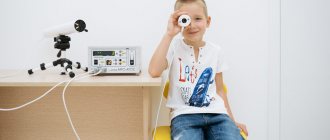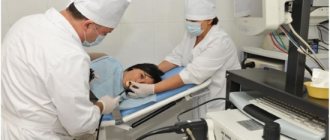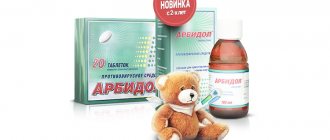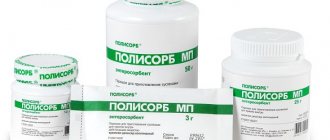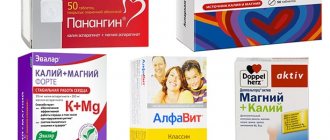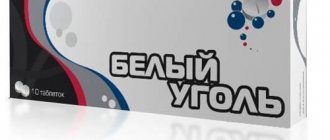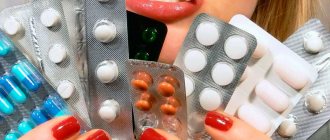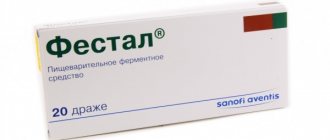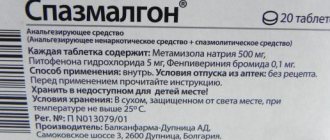Medicinal electrophoresis is a physiotherapeutic procedure by which medicinal substances are introduced into the human body. Electrophoresis can be done in Moscow at the Yusupov Hospital. Physiotherapists at the rehabilitation clinic use the latest equipment from leading US and European manufacturers to perform procedures. The medical staff is attentive to the wishes of patients. Procedures are performed in comfortable rooms equipped according to European standards.
Electrophoresis has the following effects:
- reduces the intensity of the inflammatory process;
- reduces swelling;
- eliminates pain syndrome;
- calms the nervous system;
- relaxes increased muscle tone;
- improves microcirculation;
- accelerates the process of tissue restoration;
- stimulates the production of biologically active substances (vitamins, microelements, hormones);
- activates the body's defenses.
Medicines enter the patient's body through the intercellular spaces, sweat and sebaceous glands in the form of positive or negative particles. The medicinal dose during electrophoresis is low: from 2 to 10% of the total volume of the drug contained on the pad. Most of the pharmacological drug is retained in the skin and subcutaneous fat and enters the bloodstream a day after the procedure. This property determines the delayed (prolonged) effect of the physiotherapeutic procedure: improvement of innervation and metabolism, relief of swelling and pain.
Is electrophoresis harmful? The procedures do not harm either infants or the elderly. Specialists at the Yusupov Hospital take into account indications, temporary and permanent contraindications for electrophoresis, and strictly adhere to the technique of performing the procedure. Due to the fact that electrophoresis has a pronounced local effect, it does not affect the entire body. This allows you to avoid many of the side effects inherent in traditional drug treatment.
What is electrophoresis
The topic of the beneficial effects of current on human health has been raised by the scientific community for a long time. Medicinal electrophoresis, which in medicine is also called galvanophoresis, galvanization or iontophoresis, involves the transformation, under the influence of electrical impulses, of various medications into tiny particles - ions with further delivery of the latter to problem areas. When drugs are administered via hardware, most of them remain in the layers of the dermis. The remains are transported with blood and lymph throughout the body.
What medications are commonly used
Various types of medications are used to treat infants with electrophoresis. The choice of drug depends on the existing pathology and the severity of its course.
The following drugs are used:
- Eufillin . Reduces vascular tone and improves blood circulation and drug delivery to the site of the disease. Eufillin activates the work of the respiratory center, myocardium, and increases diuresis. Doctors prescribe this drug for cerebral palsy, torticollis, and intracranial hypertension;
- Dibazol . Activates the spinal cord, strengthens the immune system. Used to relieve hypertonicity of the lower and upper extremities. It also helps with neurological diseases, intestinal disorders and pathological conditions resulting from birth trauma;
- Iodine . Used for skin pathologies and neurological disorders. It is also included in therapy for thyroid diseases;
- Lidaza . Used for pathologies of the musculoskeletal system and organs of vision, keloid scars;
- Magnesia . It has an antispasmodic and analgesic effect. Reduces the severity of inflammation. Magnesia is effective for pathologies of the respiratory system;
- A nicotinic acid . It is a synthetic analogue of vitamin PP. Used to improve carbohydrate metabolism and dilate blood vessels. The drug also accelerates tissue regeneration;
- Papaverine . Eliminates muscle spasms. In combination with Eufillin, it is used to normalize blood circulation, accelerate metabolic processes, and increase motor activity;
- Calcium . Used for muscular dystrophy and paralysis. In combination with vitamin C, it has a pronounced anti-inflammatory and absorbable effect.
Indications and contraindications
This procedure is effective against a number of diseases. Confusion about what electrophoresis is occurs in many patients who are about to undergo this procedure for the first time. Hardware administration of drugs is recommended for many diagnoses: from musculoskeletal disorders to ophthalmological problems. For this reason, the question of why electrophoresis is needed cannot be fully answered. Meanwhile, there are some limitations for hardware administration of medications. Contraindications to electrophoresis are as follows:
- pathologies of blood vessels and heart;
- oncological diseases;
- elevated temperature;
- inflammatory processes in the acute stage;
- eczema and dermatitis manifestations;
- allergies to medications administered during the procedure
Electrophoresis with aminophylline
Hardware administration of ions of this medicine helps achieve bronchodilator, anti-inflammatory and analgesic effects. Eufillin for electrophoresis is used in the form of a 2% solution, which, under the influence of current, penetrates into the layers of the patient’s dermis. The sedimentation of the drug in the subcutaneous fat promotes its gradual, dosed entry into the body.
It is worth saying that during the procedure, the patient’s cartilage tissue is intensively saturated with the active components of the drug. This pharmacology of aminophylline is used in the treatment of diseases of the musculoskeletal system: osteochondrosis of the collar zone and lumbar region, intervertebral hernia. In addition, its hardware administration is used to improve cerebral and renal circulation and treat bronchitis.
With lidase
This enzyme substance is involved in the breakdown of hyaluronic acid and promotes more active movement of interarticular fluid. Lidase for electrophoresis is selected for the purpose of preventing and treating adhesions and inflammatory phenomena of various localizations. The procedure promotes the resorption of postoperative scars and the restoration of skin after burns.
Hardware administration of lidase is effective against the negative consequences of pneumonia, tuberculosis, and bronchitis. Treatment of otitis and other inflammatory lesions of the ears can be carried out through the simultaneous use of endoural cataphoresis and external anaphoresis. In this case, only the cathode is impregnated with the lidase solution. The anode is located on the neck.
With Karipazim
Galvanic current helps transport the active substance of the drug directly to the problem area. Electrophoresis with Karipazim is used to treat pathologies of the spine and joints. The procedure is especially effective for intervertebral hernia. The tissues that cause a painful protrusion in the spinal column soften under the influence of current, which reduces the irritability of the nerve roots and, as a result, the severity of the pain syndrome.
- Lidaza - instructions for use
- How to relieve spasm of the eye muscles in children or adults - treatment with drops and special gymnastics
- Treatment of prostatitis with physiotherapy
With novocaine
Hardware administration of this anesthetic medication is carried out to obtain an analgesic effect. Electrophoresis with novocaine is indicated for neuropathic syndromes, radiculitis, osteochondrosis and other joint pathologies. The use of physiotherapy in conjunction with therapeutic massage and other manual procedures is especially effective.
With calcium
This nutrient is considered a universal substance for hardware administration. Thus, iontophoresis with calcium chloride is used to treat inflammation of the oral cavity, myositis, and hip dysplasia. It is worth mentioning separately that doctors prescribe the administration of this mineral using a hardware method for blood clotting pathologies. Calcium is especially important for infants. If there is a lack of this element, the child’s bone tissue develops according to the wrong algorithm.
With hydrocortisone
Hardware administration of drugs from the group of glucocorticosteroids is used to relieve allergic and autoimmune conditions. Electrophoresis with hydrocortisone is often used in neurological practice. It is worth noting that this procedure helps to get rid of eczema and dermatitis. Depending on the degree of damage to the skin, it is recommended to use a cream or emulsion based on hydrocortisone for hardware administration.
With magnesia
Under the influence of galvanic current, magnesium sulfate easily penetrates the cell membrane. A sufficient amount of this nutrient in the body is the key to the health of the nervous and cardiovascular systems. This mineral is involved in many chemical reactions, and the energy potential of the cell largely depends on it. Electrophoresis with magnesium fights inflammation, helps normalize heart rate and blood pressure. Meanwhile, magnesium sulfate is prohibited from being used for stomach bleeding, kidney and liver pathologies.
With proserin
The instructions for this drug indicate that it has high anticholinesterase activity. For this reason, electrophoresis with proserin is used to treat many neurological pathologies that are accompanied by a decrease in muscle tone and impaired conduction of electrical impulses. It is important to note that bromine preparations, widely used in physiotherapy, have a similar pharmacological effect. Indications for the purpose of hardware administration of proserin are:
- myasthenia gravis;
- neuritis of different parts of the body;
- bladder atony;
- recovery after stroke;
- transferred viral neuroinfections.
With dimexide
The procedure helps to achieve an antibacterial and anti-inflammatory effect. It is used to treat osteochondrosis, various joint pathologies, and abscess infections in remission. Electrophoresis with dimexide is especially useful for people who, for some reason, cannot take oral or injectable antibacterial agents. It is important to note that the procedure has virtually no side effects.
With lidocaine
The method involves local hardware administration of an anesthetic for pain relief. Comparing the effects obtained after transporting novocaine and the specified drug by electric current, we can say that electrophoresis with lidocaine has a less intense effect on tissue structures. The indication for such delivery of an anesthetic drug into the body is a pronounced pain syndrome of various etiologies.
With nicotinic acid
Hardware administration of this water-soluble vitamin, or niacin, ensures the normal occurrence of redox reactions. Electrophoresis with nicotinic acid can be carried out for different purposes. Niacin has been found to be very beneficial for patients suffering from diabetes and cardiovascular diseases. In addition, hardware administration of nicotinic acid ions helps reduce the concentration of lipoproteins and triglycerides in the blood.
- Rhinosinusitis - what is it in children and adults, signs and treatment of the disease
- Alalia - what is it: symptoms and treatment of the disease in children
- Physiotherapeutic procedure UHF - indications, mechanism of action and what to replace at home
With dibazole
A myotropic antispasmodic is used to treat arterial hypertension and facilitate the transmission of nerve impulses in the spinal cord. Electrophoresis with dibazole is often used as a method of forming nonspecific resistance of the body to the effects of exogenous irritating factors. In addition, the creation of a kind of dibazole depot in the patient’s dermis ensures the synthesis of his own interferon for a long time.
When and why is the procedure prescribed for infants?
Electrophoresis refers to the non-invasive administration of liquid drugs using a minimal electrical current. Pediatricians usually recommend this procedure for young children.
The advantages of electrophoresis for infants are as follows:
- the systemic effect of synthetic components of drugs on the body is minimized. This reduces the likelihood of side effects;
- medicinal components are delivered in active form to the lesion;
- current has an immunostimulating effect on the body;
- ease of manipulation;
- The treatment is not as painful as with injection therapy.
Electrophoresis for a baby on the neck is indicated in the following cases:
- curvature of the cervical spine as a result of congenital anomalies or injuries;
- pain in the neck area;
- neurological problems;
- cerebral palsy;
- hypotonicity or hypertonicity of the cervical muscles;
- disorders of the musculoskeletal system;
- inflammatory pathologies;
- birth injury.
Electrophoresis is not recommended for newborns. It is better to start such treatment from 1-1.5 months of age.
Electrophoresis during pregnancy
During the period of bearing a child, a woman’s immunity decreases, which can serve as a trigger for the development of many diseases. Most medications are contraindicated for use during the embryonic development of the fetus, so electrophoresis during pregnancy is a kind of way out for expectant mothers. In addition, the undoubted advantages of this procedure are:
- safety for the child;
- ensuring a high local concentration of drugs against the background of their minimum dosage.
Application of electrophoresis in ophthalmology
In ophthalmology, the electrophoresis method is successfully used. This is due to the fact that the cornea of the eye perfectly passes current. It is a semi-permeable membrane through which ions pass into the center of the eyeball. Inside the eye, the concentration of the drug increases. This increases the effectiveness of therapy. Electrophoresis is prescribed for the treatment of children with diseases such as:
- corneal dystrophy;
- cicatricial changes in the eyelids;
- chalazion;
- phlegmon;
- sty;
- keratitis;
- episcleritis.
The technique has proven its effectiveness in macular degeneration processes, when the retina of the eye is affected and central vision is impaired. This type of physiotherapeutic procedures is prescribed by ophthalmologists to people with retinopathy, which arose against the background of vein thrombosis. For atrophic changes in the optic nerve, electrophoresis is also effective. It is also used for less serious pathologies of the visual organs, including myopia.
Physiotherapy for myopia in children may not be recommended in all cases. This treatment method has certain contraindications. These include:
- blood diseases;
- acute infections;
- colds;
- epilepsy.
In gynecology
Achieving a therapeutic effect during the treatment of diseases of the female genital area is associated with some difficulties associated with an accurate diagnosis and the characteristics of each individual clinical case. Widely used solutions for electrophoresis in gynecology are solutions of iodine, magnesium and lidase. Good results in the treatment of chronic inflammatory processes with severe pain can be achieved by hardware injection of potassium iodide into the lower abdomen of women.
Possible side effects
Electrophoresis is considered one of the safest procedures for treating children. Electrotherapy sessions rarely cause side effects or complications.
In weakened and sensitive babies, the following unwanted symptoms may appear:
- skin irritation in the form of redness;
- burn;
- allergic reaction in the form of itching, burning, blisters, hyperemia, increased body temperature (more often observed in children of the first year of life);
- loss of appetite, drowsiness, lethargy;
- increased heart rate.
If adverse reactions occur, the session is stopped. The child is examined to identify the cause of poor tolerability of the procedure.
If unwanted symptoms are caused by medications, then the doctor selects other medications. If there is a negative reaction to the current, treatment is canceled.
To minimize the likelihood of developing side effects of neck electrophoresis, you should follow these recommendations:
- contact experienced and competent specialists;
- undergo the procedure in medical institutions equipped with modern equipment;
- Before the session begins, examine the child;
- follow the treatment plan suggested by the doctor.
https://youtu.be/uwnYw_PjaNY
In dentistry
The main indication for hardware administration of drugs in this area of medicine is infection of the dental canals due to periodontitis and pulpitis. The technique of electrophoresis in dentistry involves targeted transportation of drugs, due to which more active restoration of damaged dentinal tubules occurs. Through such delivery of antibiotics, the pathogenic bacterial background is eliminated, which prevents the occurrence of secondary caries on the filled tooth.
General principles of treatment
Treatment of pneumonia in modern medicine has two directions:
- drug therapy (antibiotics and drugs for immunity, etc.);
- physiotherapy (electrophoresis, UHF, exercise therapy, etc.).
The doctor decides which therapy to choose, whether to combine them and how to combine them, after assessing the severity of the disease. Below we will consider each direction in more detail.
In drug therapy, a distinction is made between etiotropic and pathogenetic treatment. The first is more frequent, widespread and effective, as it directly affects the infection. The second is aimed at increasing the body’s resistance to infection, strengthening the immune system, strengthening and restoring the function of lung tissue. Typically, etiotropic therapy constitutes the main part of treatment, while pathogenetic therapy is carried out as background and secondary.
- Etiotropic therapy
The purpose of therapy is to eliminate the infection in the body. The main means for this are antibiotics. The drug is selected by the doctor after examination depending on the origin of the disease, its duration and the characteristics of the patient’s body (age characteristics, allergies, chronic diseases, pregnancy, etc.).
The main antibiotics used in the treatment of pneumonia:
- penicillins (usually protected);
- cephalosporins (generation is selected depending on the causative agent of the disease);
- macrolides;
- fluoroquinols;
- carbapenems;
- aminoglycosides.
If a certain antibiotic is unavailable or intolerable by the patient’s body, an alternative can be found.
- Pathogenetic therapy
For this type of treatment, the following means are used:
- vitamins A, C, D, E;
- immunomodulatory drugs;
- anti-inflammatory drugs;
- desensitizing agents;
- bronchodilators.
In cosmetology
Rejuvenation and healing of the skin using current can be carried out in different ways. Thus, electrophoresis in cosmetology, or iontophoresis, is carried out using stationary and labile electrodes. The main condition for effectively eliminating skin problems is maintaining the polarity of the injected substance. It is worth mentioning separately about phonophoresis. This procedure involves the introduction of vitamins and medications into the deep layers of the skin using ultrasonic waves emitted by the device.
Features of drug electrophoresis
- ions of drugs are introduced through the ducts of the sweat and sebaceous glands of the skin;
- increasing the sensitivity of skin receptors to medical substances;
- complete preservation of the drugs’ pharmacological activity;
- uniform distribution of the drug in the cells and intercellular fluid of the body;
- depositing drugs from 1 to 15-20 days;
- pronounced therapeutic effect of drugs on the body at low doses;
- absence of side effects of pharmacological drugs, unlike other types of their administration;
- painlessness of drug administration;
- exposure of the drug directly to the area of the pathological substance, without exposing other organs and tissues;
- minimizing the possibility of allergic reactions to the administered medical substance;
- the possibility of introducing a combination of drugs;
- The location of medications on the electrodes depends on the charge of the ions.
Home electrophoresis
The procedure can also be carried out independently using special devices. Home electrophoresis eliminates the need for the patient to visit a medical facility. Devices for this purpose can be purchased at pharmacy chains at very affordable prices. It is recommended to carry out hardware administration of drugs at home only after the approval of the attending physician and familiarization with the instructions on how to do electrophoresis. The following devices are available for free sale:
- "Stream-1"
- "Potok-BR"
- "Elfor"
- "AGN-32"
Physiotherapy
This type of therapy for pneumonia is prescribed to increase immunity, improve blood circulation and suppress the possibility of developing inflammation in the lungs.
Main methods of physiotherapy:
- electrophoresis;
- UHF therapy;
- exercise therapy;
- breathing exercises.
Contraindications for physiotherapy
The above types of treatment are contraindicated in the following cases:
- peak stage of inflammation, during which the patient has a high temperature (especially for UHF);
- epilepsy, mental disorders, especially acute conditions;
- hemophilia, bleeding tendency;
- disturbance of consciousness, coma;
- malignant tumors;
- decompensated diseases of the heart and blood vessels, acute conditions associated with them;
- presence of a pacemaker;
- state of severe exhaustion;
- with caution in diabetes mellitus due to sensory impairment in this disease.
Procedures can be started after the main focus of inflammation has positive R-dynamics and the development of inflammation has been stopped. Physiotherapy is advisable during this period in order to help the body cope with residual symptoms of pneumonia and stimulate the restoration of health.
The effectiveness of exercise therapy
The most effective way to prevent the onset of the disease is regular exercise. There are many different marks that are aimed at reducing pain, relieving muscle spasm, and restoring the mobility of the vertebrae, both cervical and lumbar.
Neck exercises are quite simple and do not take much time. They can even be carried out at the workplace.
- Place your palm on your forehead and press. Tighten your neck muscles and resist the pressure.
- Press the back of your head in the same way.
- Press on one temple first. Overcoming the resistance of your hand, tense your muscles. After 10 times, change sides.
Be sure to consult your doctor before treating any illness. This will help take into account individual tolerance, confirm the diagnosis, ensure the correctness of treatment and eliminate negative drug interactions. If you use prescriptions without consulting your doctor, it is entirely at your own risk. All information on the site is presented for informational purposes and is not a medical aid. All responsibility for use lies with you.
Exercise therapy and breathing exercises
Once the main symptoms of pneumonia have been overcome, it usually takes a long time to recover. After illness, weakness and cough may remain for some time. To eliminate these residual symptoms, it is recommended to use exercise therapy and breathing exercises. Body exercises will help eliminate weakness, and breathing exercises will help you quickly overcome a cough and normalize the function of the respiratory system.
After defeating pneumonia, do not forget about it; it is better to protect yourself from recurrent diseases. It is necessary to get vaccinations in a timely manner (against influenza, pneumococcus, Haemophilus influenzae (type B). To avoid relapse, after final recovery, it is worth visiting a sanatorium or resort for complete restoration of the body.
Reviews
Lena, 25 years old: I had electrophoresis done at the direction of a doctor several years ago, due to problems with the lower back (pain). Karipain was prescribed as a medicine. The duration of the procedure was about 20 minutes plus preparatory measures (application of the drug to the electrode).
Lying on the couch, I felt a slight tingling in the hip area and a slight load due to the weighty pads. From time to time, the medical worker inquired about my well-being and said that if I felt sick or had any unpleasant sensations, I needed to report it.
There was no particular discomfort during the entire procedure. It is worth noting that after the “electrical therapy” there was a slight itching, but you should refrain from scratching. The entire treatment process took place on a device that had “seen” a lot, which was at least ten years old. The positive side of the treatment is the low cost per session. After several visits to the physical therapy office, I noticed the disappearance of the nagging “ache” in the lumbar region.
Katerina, 42 years old: A few months earlier, my neck was so twisted that I was afraid to move. I went to a local clinic, where the doctor advised me to undergo physical therapy.
I underwent treatment with electrophoresis using equipment, and it turned out to be not in vain! After three procedures the pain decreased, and after a few more times it completely disappeared.
Svetlana, 25 years old, Ivanovo
Electrophoresis was prescribed by a doctor 2 years ago because of a bad back. During the procedure, I felt a tingling sensation in the hip area. The nurse often came up and asked how I was feeling. After a course of procedures, the pain in the lower back disappeared.
Evgeniy, 39 years old, Kem
I once did electrophoresis for gastritis. This time it was prescribed 3 weeks after the knee fracture. After the sessions, the pain almost disappeared.
Sergey, 31 years old, Krasnoyarsk
After an injury to the elbow joint, my arm began to hurt when the weather changed and went numb after exercise. Electrophoresis was prescribed. The procedure didn't help. All symptoms remain.
Positive effect of the procedure on the body
The impact of electrophoresis on the body depends on which electrode dominates during the procedure.
Electrophoresis, due to prolonged exposure to low voltage current, is able to activate the body's immune defense, establish metabolic processes, and eliminate imbalances at the physico-chemical level.
The specific therapeutic effect depends on which electrode is dominant during the procedure:
- through the cathode (electrode with a negative charge) when it is necessary to dilate blood vessels, affect the functioning of the endocrine glands, and accelerate metabolism in cells.
- The anode (positive charge) ensures the restoration of water balance in the body, eliminates inflammatory processes, and relieves pain from injuries.
The essence of the method and therapeutic effect
What is electrophoresis? This is a treatment method that allows you to administer medications bypassing the digestive system and without resorting to injections. Electrophoresis uses the directed movement of particles of a medicinal composition between two electrodes located on opposite sides of the body and creating a constant electric field.
How does this happen from a physics point of view?
Under the influence of direct current, electrolytic dissociation occurs - the process of decomposition of a drug solution into charged particles - ions. The charge causes them to be attracted to the opposite pole, so they penetrate deep into the tissues of the body. When ions are brought close to the opposite electrode, they become atoms with high physical and chemical activity. Hence the other names for electrophoresis - electrotherapy or ionotherapy.
Procedure
During the physical procedure, electrodes are attached to the body as close as possible to the source of the disease.
Electrodes are attached to the body as close to the source of the disease as possible. Gauze soaked in a solution of the drug is placed between the skin and the metal plate.
The electrodes are connected to a device that sends a low-power current through them. The procedure is painless, a slight tingling sensation is felt at the site of treatment.
This allows drugs to penetrate the body through the sweat and sebaceous glands, the intercellular space in the form of charged particles - ions. From 2 to 10% of the solution with which the pad is moistened gets inside, therefore overdose is impossible during electrophoresis.
Advantages of the method
During the procedure, medicinal substances penetrate into the subcutaneous layer and are retained at a depth of 1.5 cm. From there, drug ions are carried through the blood throughout the body, the maximum effect of electrophoresis is achieved after a day. Such an action extended over time has a better effect on the results and lasts longer.
The ionic method of administering medications allows for targeted action on the source of the disease without affecting other organs . This makes it possible to convey to the center of the disease the maximum beneficial properties of the medicinal solution, without fear of the destructive effects of gastric juice.
Main requirements
Solutions or medicinal substances used for electrophoresis are subject to certain requirements:
- The solution should not contain various impurities;
- The preparation of the medicinal solution should be carried out immediately before the start of the treatment procedure;
- To dilute any active substance, use only purified water - distilled;
- If the medicinal substance is not water-soluble, the following solvents are used - purified alcohol, dimexide or dimethyl sulfoxide;
- Saline solution cannot be used as a solvent;
- To prepare enzyme solutions, buffers, for example, phosphate, bicarbonate and others, can be used as a solvent.
Related articles: Main apparatus for electrophoresis
In research activities, electrophoresis is necessary to separate particles of certain media, for example, blood serum or protein iontophoresis. Electrophoresis is an effective and convenient way to analyze protein solutions and nucleic acids. In research activities, this type of physical therapy cannot demonstrate quantitative data on the structure of molecules.
Various scientific theories suggest the following - mobility is directly proportional to the ratio of the total charge to the coefficient of friction. Such a dependence stimulates the active use of electrophoresis, which will make it possible to obtain accurate information about the relative size or relative sizes. Blood serum contains dozens of proteins and enzymes that can be isolated using electrophoresis. Electrophoresis, as a well-known informative research method, allows you to quickly and clearly detect paraproteins in various biological fluids, in particular in blood serum. If, during research electrophoresis, altered paraproteins are detected in the blood serum, namely a change in the structure of proteins, the identification of additional components or a decrease in their normal amount, indicates the need for additional studies of blood and proteins.
How does the device for electrophoresis work?
The standard technique for performing the electrophoresis procedure for protrusions or hernias is as follows. Stationary Amplipulse-5 (about 39 thousand rubles), or portable Potok (11 thousand rubles) devices, or more modern devices are used.
Any device is an alternating current rectifier, previously electron tube, currently semiconductor, with regulation of the current strength on the electrodes. Almost all devices operate from a standard alternating current network with a frequency of 50 Hz and a voltage of 220 V, are manufactured according to the second class of protection and, accordingly, do not require grounding devices. The device must be equipped with a milliammeter (either analog with an arrow, or digital in modern devices). There is a potentiometer, or rheostat, that allows you to slowly and smoothly regulate the current in the patient circuit between the electrodes. In older models, there is a separate shunt to the ammeter, which allows you to switch the limits of the measured current from 5 and 50 milliamps.
Apparatus.
In new models, the shunt is integrated into the microcircuit. The device is equipped with output terminals with mandatory polarity markings: “plus” - red and “minus” - white. The kit includes marked wires and a variety of electrodes that can be used as an anode, and in another circuit, as a cathode, since both electrodes are made of the same material. Electrodes are usually made of thin lead because they can bend and follow the curves of the body. Electrodes must be regularly cleaned of lead oxide as oxidized electrodes become less effective. Modern electrodes are made of special fabric impregnated with graphite. They are non-toxic, elastic, and conduct electricity well.
UHF procedures
UHF is based on the heating of tissues by an ultra-high frequency electromagnetic field; the current can be pulsed or continuous.
In case of pneumonia, UHF helps well in the acute period (but after the temperature drops to normal levels), with its help you can speed up the process of eliminating the infection and recovery. At the same time, in inflammatory tissues there is a decrease in edema, an increase in local blood flow, and a decrease in secretion by the bronchial glands. In addition, UHF helps to stop the proliferation of microorganisms in the area of inflammation and reduce their vital activity. The average course is 10-12 procedures, the average duration of which is 8-15 minutes.
Symptoms
The supply of micronutrients to the organs of the head occurs through the blood, and due to disruption of its circulation, metabolism also deteriorates. Because of this, various symptoms begin to arise that affect the overall well-being of a person:
- headache;
- dizziness;
- violation of movement coordination;
- vision deteriorates noticeably;
- snoring appears, which indicates muscle tension;
- There is numbness and coldness of the extremities.
Quite often, painful sensations can radiate to the shoulder or arm, and intensify when turning the head or bending in an unusual way. The pain is sometimes so severe that nausea and dizziness begin.
Causes of the disease
- This is a genetically determined formation;
- Disorders of metabolic processes in the body, long-term infections and intoxication syndrome;
- Obesity (second, third degree);
- Food not enriched with microelements and vitamins;
- Spinal trauma;
- Staying in an incorrect position for a long time, for example, curvature of the spine while working at the computer;
- Weak muscles, leading to spinal instability;
- Flat feet;
- Physical inactivity;
- Work associated with lifting heavy objects, rapid changes in body position (sharp bends, turns, etc.);
- Constant stress, overexertion, hypothermia;
- Mattresses and pillows are not comfortable for sleeping.
The classic picture of osteochondrosis of the cervical spine directly depends on the anatomical features of this area (in the neck area there is a large number of cervical plexuses, nerves, vessels that transport blood and nutrients to the brain, soft tissues of the face and neck, etc.):
- Cervicalgia is pain in the neck area. It is considered the first classic symptom of cervical lesions. The duration, strength, and nature of pain directly depends on the number of affected nerve roots and the level of damage to the intervertebral discs. For example, when the second and third cervical vertebrae are affected, pain and discomfort appear in the area of the chin, tongue, and auricle; when intervertebral discs below 4-5 are affected, the pain is localized in the neck, shoulder, and shoulder girdle;
- Constant headache, diffuse in nature, combined with dizziness, nausea and vomiting;
- Sleep disturbance due to muscle spasms and pain in the affected area, cervical spine;
- The nature of pain in cervical osteochondrosis is constant, severe, rarely paroxysmal pain. It may decrease at rest and intensify with active movements - tilting the head or turning;
- Cardiac syndrome is a rare clinical symptom when the cervical region is affected - pain behind the sternum, in the heart area, left shoulder blade, and shoulder girdle. The pain changes with coughing, turning and tilting the head. This is due to irritation of the sympathetic fibers innervating the heart muscle.
Diagnosis of the disease “osteochondrosis, the affected area is the cervical spine” is carried out using X-ray examinations, computed tomography, nuclear magnetic resonance, and Doppler ultrasound.
After numerous observations, experts have established several reasons that are prerequisites for the development of the disease:
- poor posture;
- sedentary lifestyle;
- back injuries;
- professional activity that involves heavy physical labor;
- weak back and neck muscles;
- overweight;
- frequent stress and overexertion.
Prices
The cost of devices for electrophoresis sessions depends on the model of the device. The most accessible today are:
- Elfor ≈ 2700-2990₽;
- Flow ≈ 8790-9900₽.
For the session you will need medicinal solutions:
- Lidaza ≈ 208-327 RUR;
- Novocaine ≈ 16-65₽;
- Eufillin ≈ 28-65₽;
- Magnesia ≈ 25-51₽;
- Karipain ≈ 217-1487₽;
- Mumiyo ≈ 63-79 RUR;
- Saline solution for dilution ≈ 34-46 RUR.
If you plan to undergo an electrophoresis session in a clinic, then its price will depend on the status of the medical institution, the device used, the area of influence and the medication, and will be about 190-1980 rubles.
How does the session work?
The session is conducted in the following sequence:
- The electrode gasket is impregnated with an alkaline solution.
- The doctor treats problem areas with a negatively charged electrode, using sliding movements. The positive electrode is in the patient's hand.
- At the end of the session, the polarity of the electrodes is changed, and repeated treatment is carried out (1-2 minutes).
- A nourishing mask is applied.
The procedure takes 3-4 minutes, frequency – once every 2 weeks. Course of treatment – 6 procedures. Repeated treatment – after 2 months.
And the rejuvenation procedure goes like this:
- The cosmetologist impregnates tissue pads with a nutritious or therapeutic solution and places them on the skin (under the electrodes).
- After turning on the device, the ions of the active substance penetrate deep into the skin. By moving the electrodes in a sliding motion, the cosmetologist sequentially treats areas of the face and neck. An iontophoresis session lasts 7-8 minutes.
- After the session, a nourishing mask is applied for 10 minutes.
Prescribe from 6 to 10 procedures.
Electrophoresis is a highly effective physiotherapeutic procedure. The achieved therapeutic (or cosmetic) result is maintained for a long time after completing a course of physiotherapy.
It is important that the sessions are performed by qualified specialists who have practical experience in their field and are well aware of the functionality of medical equipment. During the procedure, the specialist must continuously monitor the patient's condition.
A good doctor prescribes sessions only after receiving reliable evidence that there are no absolute contraindications to the procedure.
Sessions are canceled if severe irritation appears on the skin, or if health deteriorates due to exposure to current or prescribed medication.
In general, the procedure is well tolerated by patients, regardless of age and severity of the disease. In order for the treatment to be effective, it is necessary to punctually follow the recommendations of the attending physician, and also complete the full course of prescribed procedures.
Watch a video of how electrophoresis is done for facial skin:
https://youtu.be/1syBv8CKkZc
general description
The first question that arises regarding this element is: is bromine a metal or a non-metal? According to the standard classification, this substance is a chemically active non-metal, and more specifically, it is a halogen.
The main difference between halogens and many other elements is that they oxidize very vigorously. This means that halogens can only be found in their natural form in a variety of compounds.
Compared to other halogens, bromine dissolves relatively well in water. This allows you to create a solution of bromine water, in which some reactions can occur, such as the formation of hypobromous acid. The interaction of bromine with various substances is incredibly extensive, since it is a halogen, and therefore easily enters into almost any reaction. Its synergists include fluorine, aluminum, iodine and chlorine.
Since the molecule of this element has two atoms, the formula of bromine is Br2.
Externally, this substance looks like a caustic liquid of a dark red hue. It has a very strong unpleasant odor and is also poisonous. The name bromine comes precisely from these properties. It is translated from ancient Greek as “bad smell” or “stench.”
Electrophoresis with iodine and its derivatives
Electrophoresis with iodine, calcium iodide and other medicinal substances, where the main active ingredient is iodine, are prescribed for diseases affecting different systems of the human body. Severe diseases that require constant and long-term treatment - arthrosis with a progressive nature, spondylosis (during remission), radical fibrous and bone changes, proliferation of fibrous tissue around the affected joint. Thus, iodine has a resolving effect. To carry out electrophoresis, a disposable pad moistened with an aqueous solution of potassium iodine is placed under the positively charged anode. The duration of the procedure with the introduction of potassium iodine is half an hour, daily. There are transcerebral iodine electrophoresis or Bourguignon electrophoresis. Method of implementation - pads with potassium iodine are applied to the surface of the closed eyelids, and round-shaped metal electrode plates connected to wires are bandaged so that the patient does not experience a feeling of discomfort. The third electrode, soaked in plain water, is placed on the occipital region and connected to the positive pole. Electrophoresis with potassium iodide according to Bourguignon is indicated for damage to large vessels of the brain, that is, atherosclerosis of cerebral vessels. Electrophoresis with magnesium also has a beneficial effect on the blood vessels of the brain and nervous system.
Related articles: Arthrosis of the knee joint and its treatment
